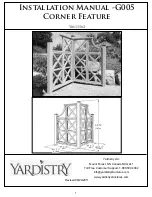
P/N 95P-6001-00 (October 2020)
Wayfinder DVL Guide
Page 6
EAR-Controlled Technology Subject to Restrictions Contained on the Cover Page.
Beam Clearance
Acoustic obstacles such as cables, hull, other in-
struments, etc. are numerous on undersea vehicles.
Special care should be observed in clearing the
Wayfinder beams of any acoustic obstacles. A 90-
degree cone around the face of the Wayfinder
should be observed to account for each beam
acoustic spread. Any acoustic obstacle in the Main
Beam and acoustic spread will interfere with the
Wayfinder measurement or worse prevent the
measurement altogether. If the Wayfinder is used
near a quay wall for instance, then a quick rule of
thumb is that for every meter of vertical separation
between the Wayfinder face and the seabed the
same separation is necessary between the Way-
finder and the Quay wall. The Wayfinder also has side lobes, which could collect energy backscattered by
acoustic obstacles in the beam clearance cone as shown in the outline installation drawing (Figure 5 and
Bottom Strike Protection
When mounting the Wayfinder, ensure there is always a section on the hull/platform that is lower than
the Wayfinder location. This will reduce the risk of damage to the Wayfinder should you run aground or
collide with any submerged obstacle.
Good mounting location – on centerline, level pitch/roll. Wayfinder has good beam clearance
and is protected from the bottom and most submerged obstacles.











































